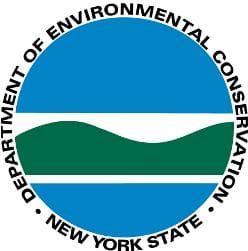New York DEC Issues Emergency Regulation for Chronic Wasting Disease to Prohibit Importing Certain Animal Parts
OutdoorHub 10.17.12

The New York State Department of Environmental Conservation (DEC) issued an emergency rulemaking that revises the state’s Chronic Wasting Disease (CWD) regulations in response to a confirmed case of CWD in Pennsylvania, DEC Commissioner Joe Martens announced today. Effective immediately, the revision prohibits importing certain parts of white-tailed deer or American elk taken in the state of Pennsylvania.
The Pennsylvania Department of Agriculture confirmed the first case of CWD in Pennsylvania on October 11 at a deer farm in New Oxford (Adams County), PA. CWD is a contagious neurological disease affecting deer, elk and moose. It causes a characteristic spongy degeneration of the brain in infected animals resulting in emaciation, abnormal behavior, loss of bodily functions and death. In response, DEC amended its CWD regulations to prohibit importing the following parts of deer or elk taken in Pennsylvania: brain, eyes, spinal cord, tonsils, intestinal tract, spleen or retropharyngeal lymph nodes.
“Hunters who take a deer or elk in Pennsylvania must now butcher the animal and remove the prohibited parts before entering New York State,” said DEC Commissioner Martens. “This action is necessary to protect New York’s populations of deer and moose. Most successful hunters already opt to butcher a deer and put the meat in a cooler before traveling back to New York.”
DEC’s ongoing extensive surveillance program, initiated in 2002, first confirmed CWD in New York State in 2005 and has not discovered any additional cases of CWD since that time. DEC recently revised its surveillance plan and efforts this year will concentrate on collecting tissues at taxidermists as well as deer processors.
It is not known exactly how CWD is transmitted. The infectious agent, a prion, may be passed from animal to animal through feces, urine or saliva. The minimal incubation period between infection and development of clinical disease appears to be about 16 months. The maximum incubation period is unknown, as is the point at which shedding of the CWD agent begins during the prolonged course of infection.
The movement of infected material is believed to be one of primary routes of transmission. This amendment to the CWD regulations prohibits importing those parts of a deer where the disease is most likely to be found. DEC advises hunters not to consume the meat of any animal that acts abnormal and to exercise precautions when butchering animals, such as using rubber or latex gloves. Also, DEC urges hunters to dispose of deer parts that will not be consumed in a municipal landfill.
Additional information about CWD can be found on DEC’s website at: http://www.dec.ny.gov/animals/7507.html and http://www.dec.ny.gov/animals/33220.html. Information is also available on the Chronic Wasting Disease Alliance’s website at http://www.cwd-info.org/.

